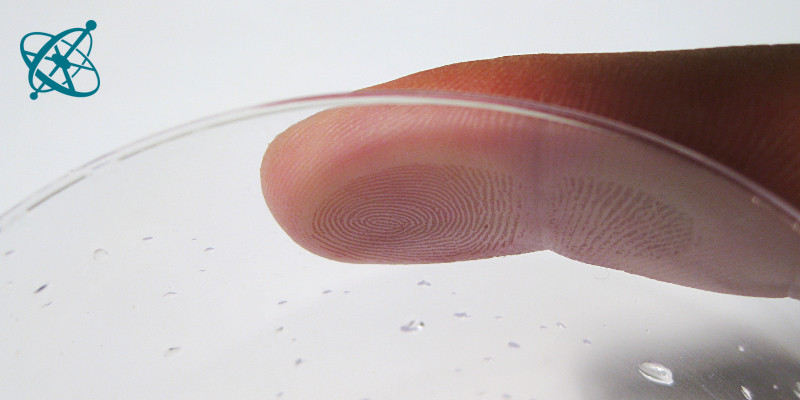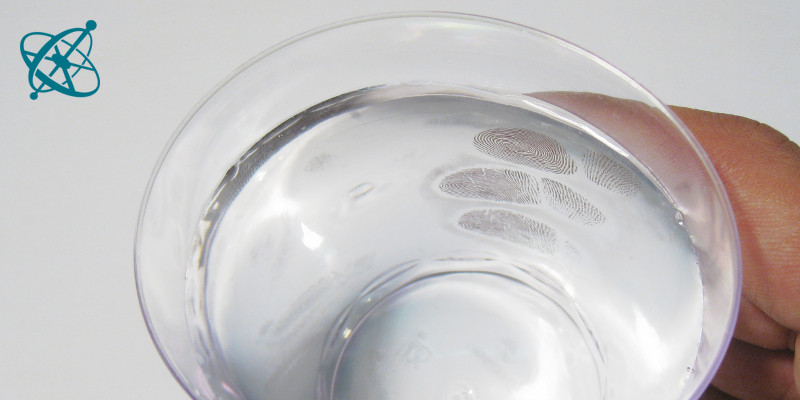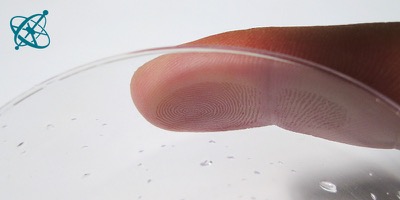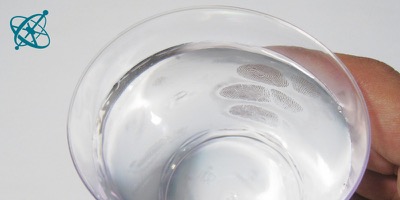 www.sciensation.org | Ciênsação hands-on experiments are published as Open Educational resources under a Creative Commons Attribution-ShareAlike 4.0 International License.
www.sciensation.org | Ciênsação hands-on experiments are published as Open Educational resources under a Creative Commons Attribution-ShareAlike 4.0 International License.
Why can you see your fingerprints on the glass?

Water in the glass enhances the effect.
Fingerprints
Challenge your students to explain this everyday observation, ideally some time after you discussed total internal reflection. This activity is less about the physical phenomena than about the approach your students take to find out what causes it.
Training science skills to find out the origin of a phenomena.
Water
When asking your students to explain this phenomena, avoid making a link to total internal reflection. Instead encourage them to find the answer through experimenting and reasoning.
Look at your fingerprints while holding a glass of water over a white surface.
1. Why can you see your fingerprints so clearly?
What effect has the color of the surface under the glass?
› It is the same color you see around the fingerprint. A white ground results in a better contrast.
So where does the light come from which you see around the fingerprint lines?
› It is a reflection of the area below the glass.
What happens when you press a dry or wet paper against the glass?
› The dry paper has no effect. But the reflection is suppressed where a wet paper is in contact with the glass.
Why does water on the glass suppresses the reflection?
› The light is reflected due to total internal reflection which depends on the difference in refractive index. Under the given viewing angle, the difference between glass and air is large enough to cause total internal reflection, while the difference between glass and water is too small.
By moving a hand under the glass, it becomes clear that the light seen on the glass wall is a reflection from below the glass. More specifically, it is a total internal reflection at the interface between the glass wall and the air.
Total internal reflection depends on the difference in the refractive index between materials. Where water or sweat from fingers are in contact with the glass, no total internal reflection takes place, because the refractive indices of water and glass are too similar. At theses regions an observer sees the skin behind the glass instead of the reflection. Where the top of the skin profile is in contact with the glass, the friction ridge therefore becomes clearly visible as dark lines.

